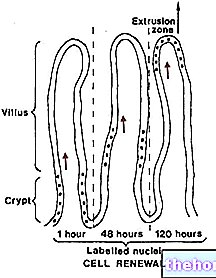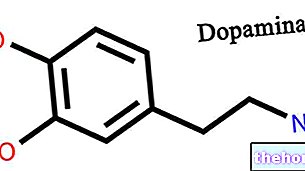«Carbohydrates and hyperglycemia
Skeletal muscle and adipose tissue, which together make up about 60% of body mass, are called insulin-dependent tissues. This term has been attributed to them for their ability to absorb glucose from the blood only in the presence of adequate insulin concentrations. In other words, if insulin is missing, glucose cannot enter the muscle and fat cells.

The concentration of insulin in the blood is low during fasting, when the blood sugar falls below normal values. In such conditions, about 60% of the body mass does not consume glucose, but mainly resorts to the oxidation of fatty acids. This phenomenon has the purpose of saving sugar, so as to ensure an adequate supply of glucose to the insulin-independent tissues (insensitive , that is, to the insulin intake). In these tissues, first of all the nervous one, glucose enters safely even in the absence of insulin.
When blood glucose falls below normal values (70-80 mg / dl) it is called hypoglycemia. In response to this condition, various hormones are secreted, including glucagon and adrenaline. Their main target is the liver, where they stimulate enzymes responsible for the degradation of glycogen. Thus, by drawing on glucose reserves, the liver can release glucose into the blood. and rebalance blood sugar.
Since the liver glycogen stores are limited (maximum 100-120 grams), the organism is forced to resort to auxiliary strategies to ensure the right supply of glucose to the insulin-independent tissues. In addition to favoring the hepatic degradation of glycogen, glucagon and adrenaline stimulate a further process, called gluconeogenesis.Through a coordinated series of enzymatic reactions that develop in the liver, these hormones stimulate the ex-novo synthesis of glucose starting from: glycerol, lactic acid and amino acids.
Glycerol, together with fatty acids, is one of the breakdown products of triglycerides. The oxidation of these substrates is particularly active during fasting, since in these conditions fats represent the main energy source of insulin-dependent tissues.
Lactic acid is formed when muscles work in conditions of low oxygen supply. A normally active adult man produces about 120 grams of lactic acid per day; of these 40 g are produced by tissues having an exclusively anaerobic metabolism (retina and blood cells red) the remainder from other tissues (especially muscle) based on the actual availability of oxygen.
Also some amino acids, circulating in the blood or coming from the breakdown of muscle proteins (such as alanine, glycine, glutamic acid and branched chain amino acids), are transformed into glucose in the liver.
















.jpg)











